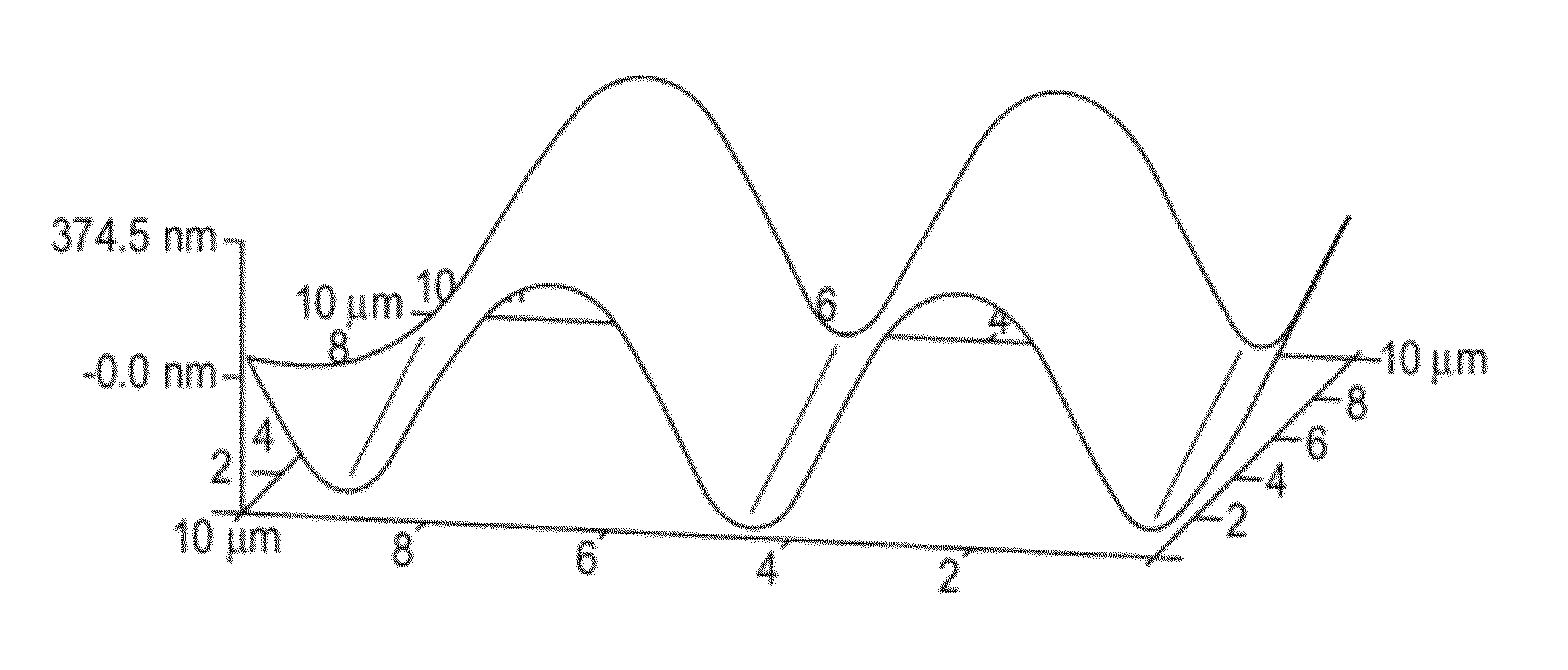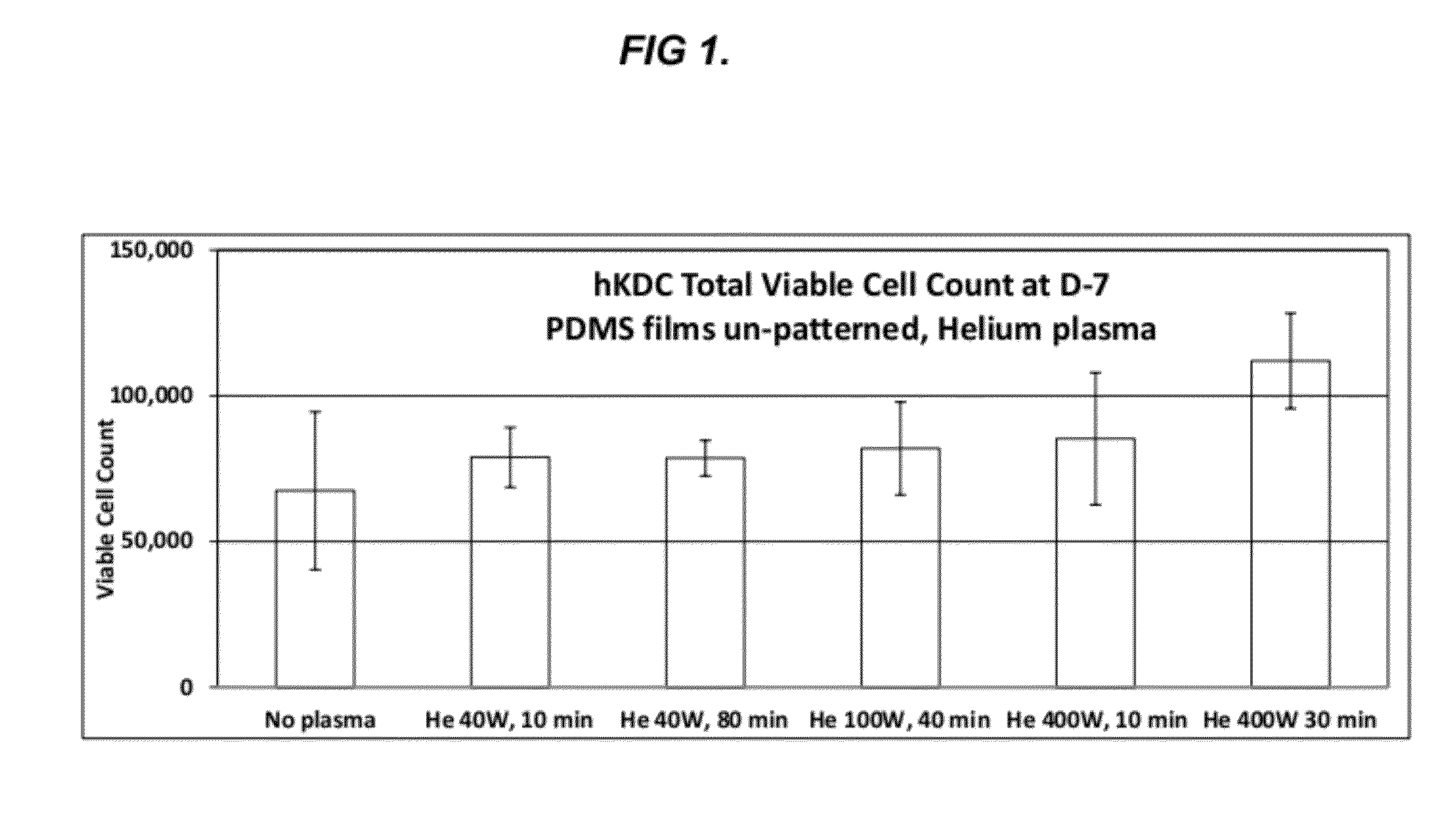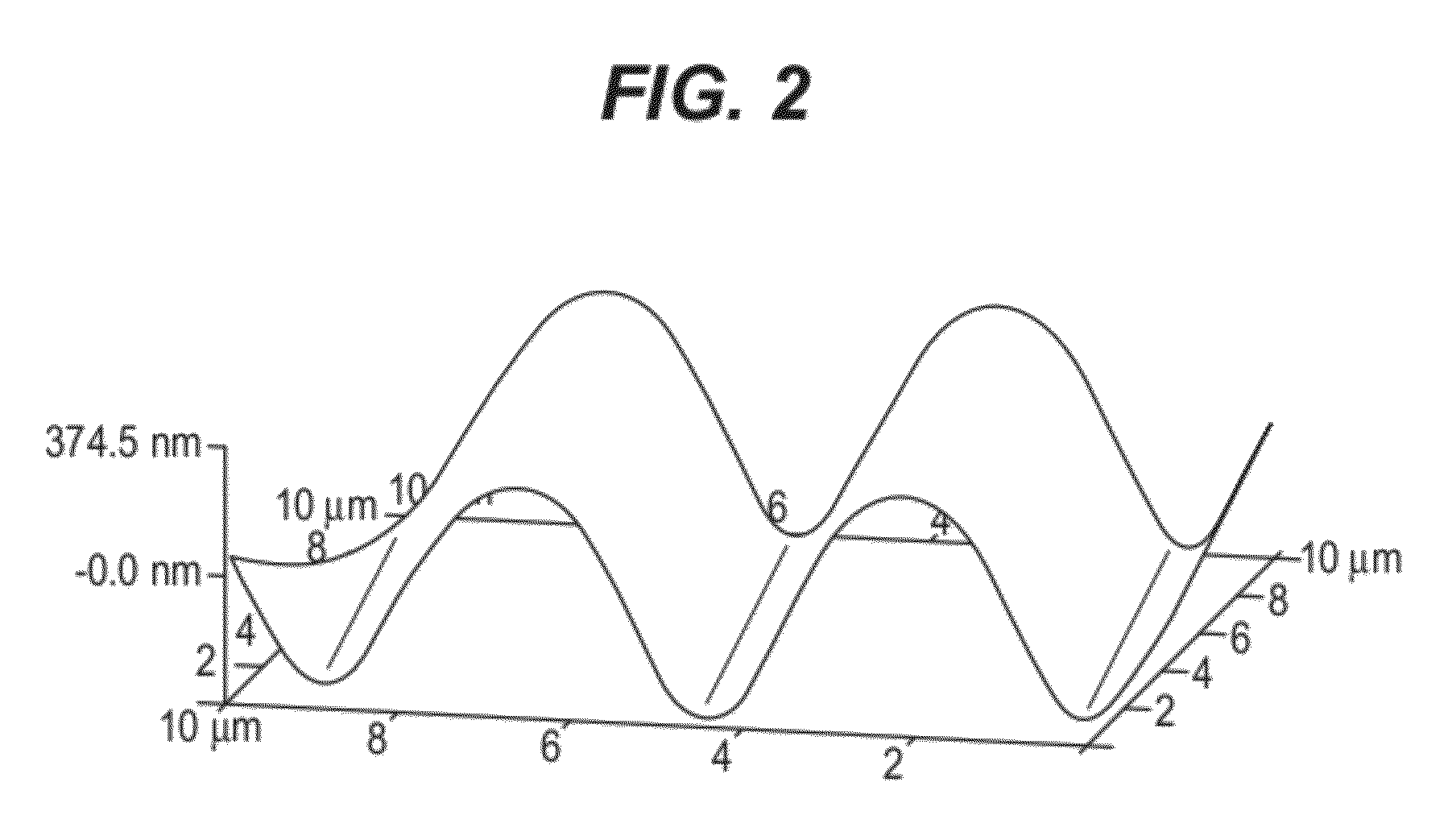Silicone polymer substrates having improved biological response from hkdcs
- Summary
- Abstract
- Description
- Claims
- Application Information
AI Technical Summary
Benefits of technology
Problems solved by technology
Method used
Image
Examples
example 1
Cell Adhesion on Plasma Treated PDMS
[0034]Polymer films of about 3 mm thickness were prepared from polydimethylsiloxane sold under the tradename SYLGARD 184 (Dow Corning, Midland, Mich.) by mixing the pre-polymer and catalyst in the ratio of 10:1 (total 22 gm weight) and pouring in a ″ diameter polystyrene petridish. The films were cured in a vacuum oven at 65 degrees Celsius for 4 hours. Then, the surfaces of the polymer films were physically modified using helium (He) inert gas plasma. Polymer films of approximately 2.5 cm2 were placed into the plasma chamber. The plasma chamber was first evacuated of oxygen by a vacuum pump (15 min) and backfilled with Helium inert gas to a pressure of 34 mTorr. The plasma was then set to a specified power of, say, 100 W and turned on for a set duration of, say, 40 min. In order the determine the power and time conditions required for the plasma treatment to get optimal cell attachment, a range of powers, from 100-400 W, and times, from 10-90 min...
PUM
| Property | Measurement | Unit |
|---|---|---|
| Power | aaaaa | aaaaa |
| Power | aaaaa | aaaaa |
| Biocompatibility | aaaaa | aaaaa |
Abstract
Description
Claims
Application Information
 Login to View More
Login to View More - R&D
- Intellectual Property
- Life Sciences
- Materials
- Tech Scout
- Unparalleled Data Quality
- Higher Quality Content
- 60% Fewer Hallucinations
Browse by: Latest US Patents, China's latest patents, Technical Efficacy Thesaurus, Application Domain, Technology Topic, Popular Technical Reports.
© 2025 PatSnap. All rights reserved.Legal|Privacy policy|Modern Slavery Act Transparency Statement|Sitemap|About US| Contact US: help@patsnap.com



